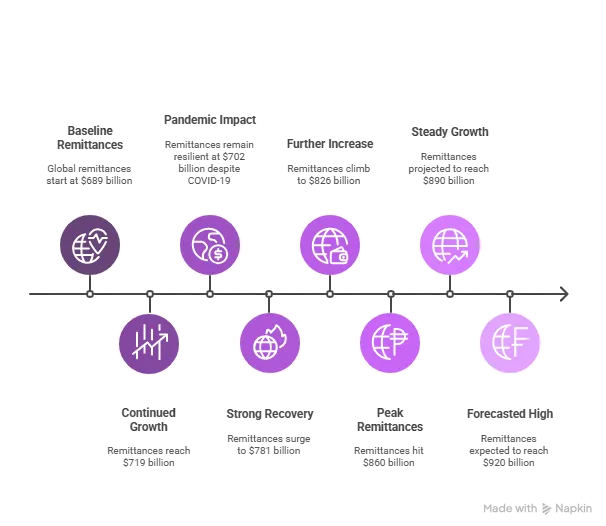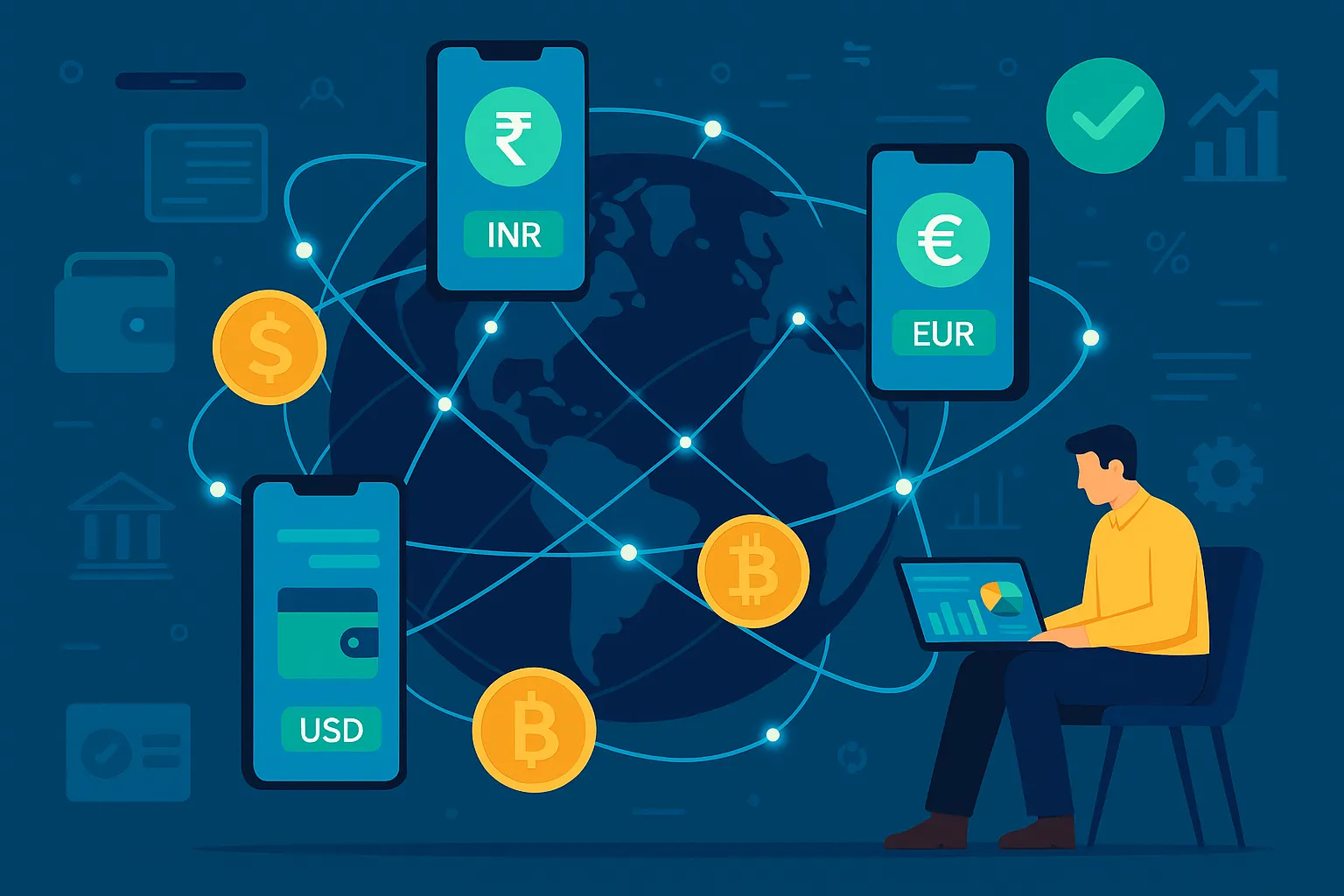If you’ve ever tried sending money across countries — say, wiring rent to your cousin in Canada or paying a freelancer in the Philippines — you’ve probably had one of those “Why is this so hard?” moments. Between the conversion rates, delays, and banking black holes, international money transfer can feel like 2005 with a dash of 90s bureaucracy.
For startups and digital entrepreneurs, this isn’t just a personal pain — it’s a business opportunity hiding in plain sight. With freelancers, remote teams, digital nomads, and e-commerce stores mushrooming across the globe, there’s massive demand for faster, cheaper, and smarter cross-border payments. Think less paperwork, more PayPal-meets-crypto vibes.
So, how do you tap into this lucrative fintech niche? That’s where a well-oiled business model for international money transfer comes in — and lucky for you, that’s our jam at Miracuves.
The Booming Landscape of Cross-Border Money Transfers
Global remittances aren’t slowing down. In fact, they’re skyrocketing. According to the World Bank, international money transfer remittances topped $860 billion in 2023 — and a solid chunk of that was through mobile and digital platforms.
From popular names like Wise (formerly TransferWise), Remitly, and Payoneer to mobile-first disruptors like WorldRemit and Revolut, fintech players are rewriting how money travels the world. And here’s the kicker: most traditional banks still charge 5–7% fees while these digital champs offer rates as low as 0.5–2%.

Core Components of a Successful International Money Transfer App
1. Multi-Currency Wallets
Users should be able to hold, convert, and send money in multiple currencies — think USD, INR, EUR, GBP, and more. Bonus if you integrate crypto like USDT or Bitcoin for borderless transactions.
2. Real-Time Exchange Rate Engine
No one wants to feel shortchanged. A real-time FX engine ensures users get the best bang for their buck. Pair this with a international money transfer
3. Compliance & KYC Layer
You’ll need airtight AML (Anti-Money Laundering) protocols and digital KYC onboarding to stay legit. APIs from tools like Jumio or Onfido make this seamless.
4. Payment Gateway Integrations
For funding transfers, tie-in with credit/debit cards, bank accounts, Apple Pay, and UPI (in India). Also, offer local cash-out methods like mobile money in Africa.
5. Transaction Tracking + Notifications
Just like Amazon lets you track your order, users should see every step — initiated, processing, in transit, completed. Add push/email updates for trust.
Read more : How to Market a International Money Transfer App successfully After Launch
Monetization Models That Actually Work
Let’s talk about how the money transfer apps make money — and how you should too.
1. Transfer Fees (Flat or Percentage-Based)
The classic model: charge a fixed fee or % based on the amount. Wise does this well with ultra-transparent sliders.
2. Exchange Rate Markup
Add a small margin on the mid-market rate. It’s subtle but scales beautifully with volume.
3. Premium Subscription Plans
Offer faster transfers, higher limits, or zero-fee options to paid users. Think of it as the Amazon Prime of fintech.
4. B2B White-Label Licensing
You can license your money transfer tech stack to banks or fintechs in emerging markets. Great recurring revenue model.
5. Cross-Selling Financial Products
Once you have a user’s trust, upsell insurance, loans, investment plans, or virtual cards.
Read more : Most Profitable International Money Transfer Apps to Launch in 2025
Tech Stack Essentials for Building a Transfer Platform
Here’s a peek under the hood of a modern money transfer app:
| Layer | Tools/Frameworks |
| Frontend | React Native, Flutter |
| Backend | Node.js, Laravel |
| Databases | PostgreSQL, MongoDB |
| Payment APIs | Stripe, Razorpay, PayPal |
| KYC/AML | Onfido, Trulioo, Jumio |
| FX Rates | OpenExchangeRates, CurrencyStack |
| Blockchain (Optional) | Solidity, USDC APIs, Chainlink |
Growth Levers: How to Attract & Retain Users
You’ve built the platform — now what?
1. Referral Bonuses & Affiliate Programs
Users love free money. Give them a slice of the transfer fees when they refer others.
2. Gamified Loyalty Programs
Reward points, badges, or cashback for frequent users — international money transfer create an experience, not just a transaction.
3. Local Language + UX
Hyperlocalize. Use Hindi in India, Tagalog in the Philippines, Swahili in Kenya — this builds instant trust.
4. Speed & Transparency
Market the “sent in seconds” feature. No one wants to wait three days for a critical payment.
You’ve built the platform — now what? Well, here’s some food for thought: digital payments worldwide are projected to hit $11 trillion by 2026, according to Statista — so yeah, the market’s not just hot, it’s on fire.
Read more : Revenue Model for International Money Transfer
Conclusion
International money transfer is no longer a luxury — it’s a necessity for a connected world. But building a scalable, compliant, and profitable platform? That takes strategy, tech, and vision.
At Miracuves, we help innovators launch high-performance app clones that are fast, scalable, and monetization-ready. Ready to turn your idea into reality? Let’s build together.
FAQs
What licenses are required for launching a money transfer app?
You’ll need regional licenses like MSB (US), EMI (EU), or an RBI-compliant license in India. Partnering with legal experts or third-party compliance APIs can speed up the process.
Can I integrate crypto with my money transfer platform?
Yes, you can! Many platforms now support USDT, Bitcoin, or Ethereum for faster and borderless payments — just ensure local compliance.
How do I ensure low transfer fees and make money?
Offer mid-market exchange rates and keep fees transparent. Monetize through markup, subscriptions, or premium services for frequent users.
What’s the difference between peer-to-peer and bank-to-bank transfers?
P2P involves wallets and instant transfers (like Venmo or Paytm), while bank-to-bank typically takes longer and involves legacy infrastructure.
How long does it take to build an app like Wise or WorldRemit?
With a skilled team or a clone development partner like Miracuves, it can take as little as 6–10 weeks to get your MVP live.
Related Articles :








